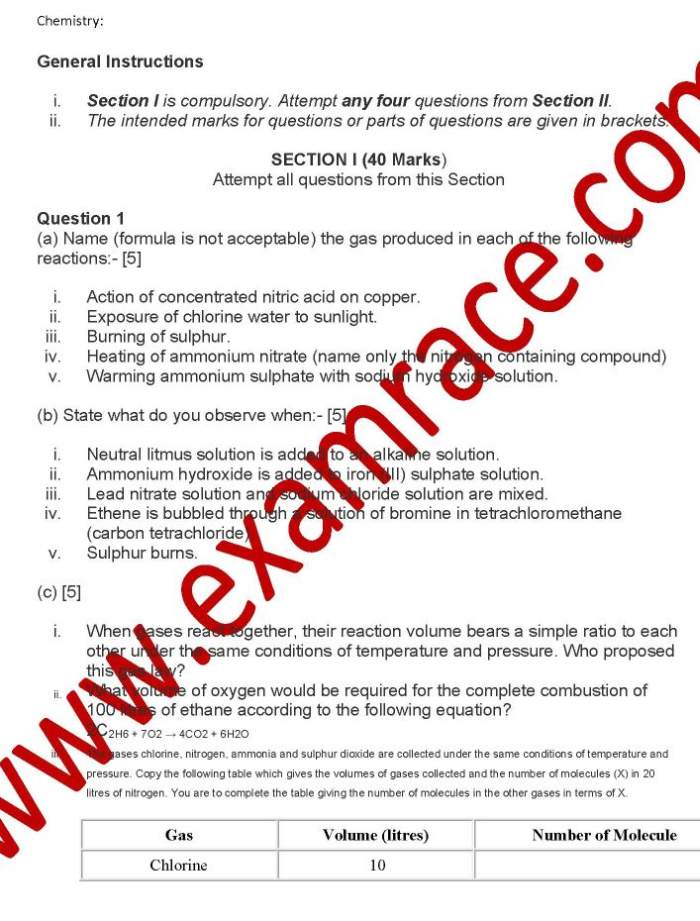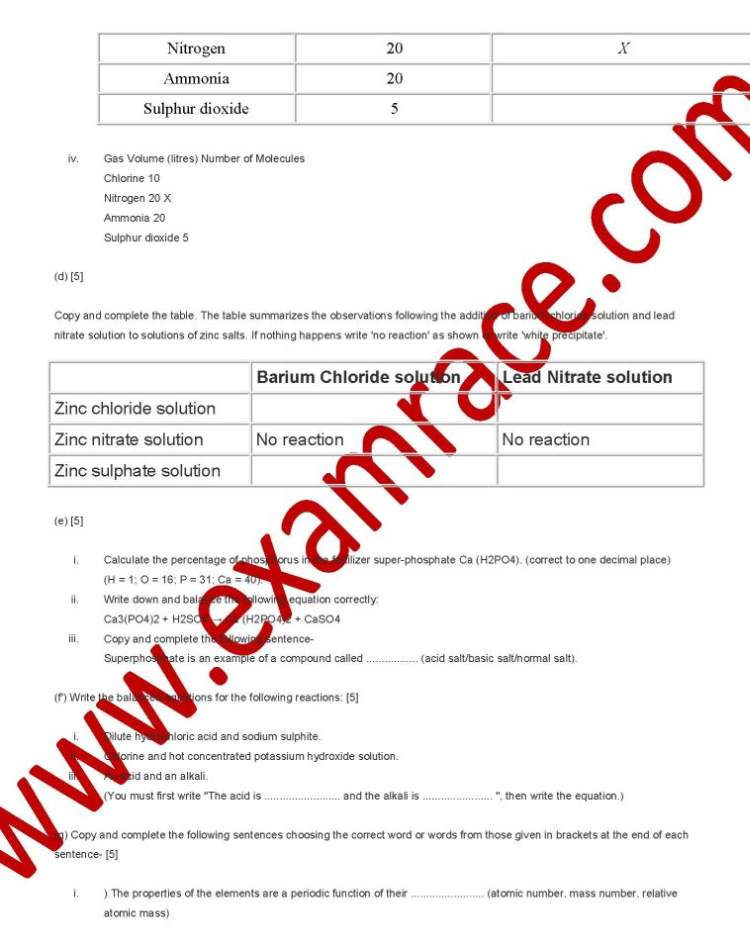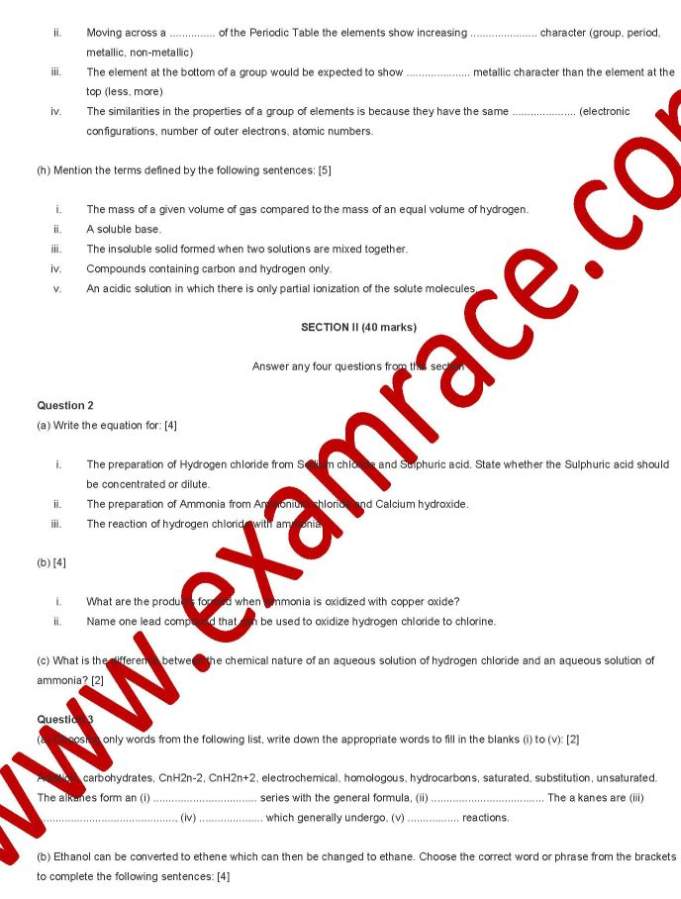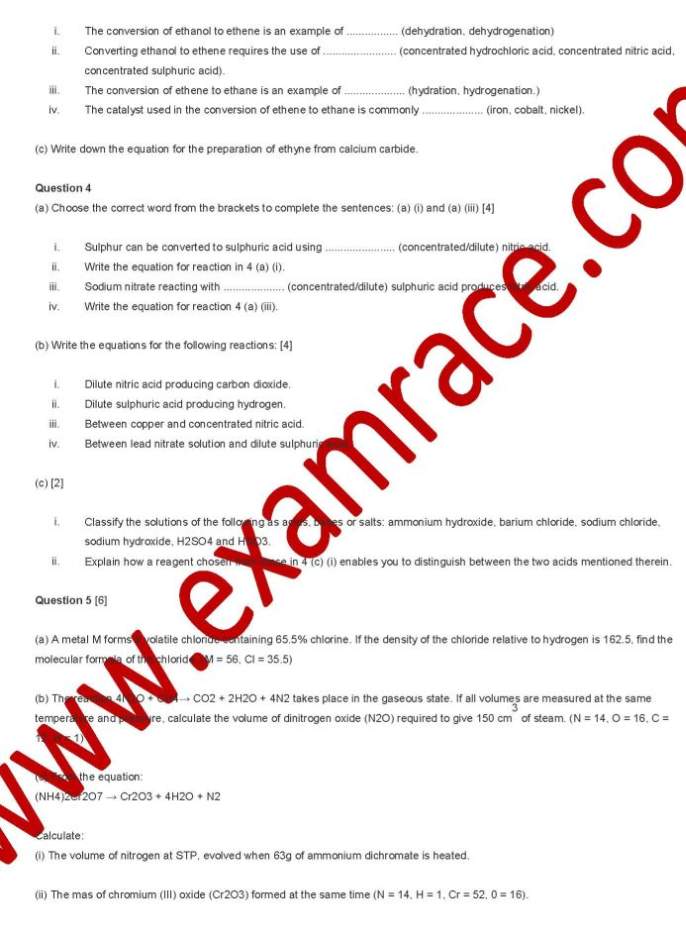|
#4
22nd May 2015, 10:58 AM
| |||
| |||
| Re: ICSE board 10th standard chemistry Question paper
As you want I am here providing you sample paper of 10th standard chemistry subject exam of the ICSE board Sample paper : a) Name (formula is not acceptable) the gas produced in each of the following reactions:- [5] i. Action of concentrated nitric acid on copper. ii. Exposure of chlorine water to sunlight. iii. Burning of sulphur. iv. Heating of ammonium nitrate (name only the nitrogen containing compound) v. Warming ammonium sulphate with sodium hydroxide solution. (b) State what do you observe when:- [5] i. Neutral litmus solution is added to an alkaline solution. ii. Ammonium hydroxide is added to iron (III) sulphate solution. iii. Lead nitrate solution and sodium chloride solution are mixed. iv. Ethene is bubbled through a solution of bromine in tetrachloromethane (carbon tetrachloride). v. Sulphur burns. ICSE board 10th class chemistry paper      |